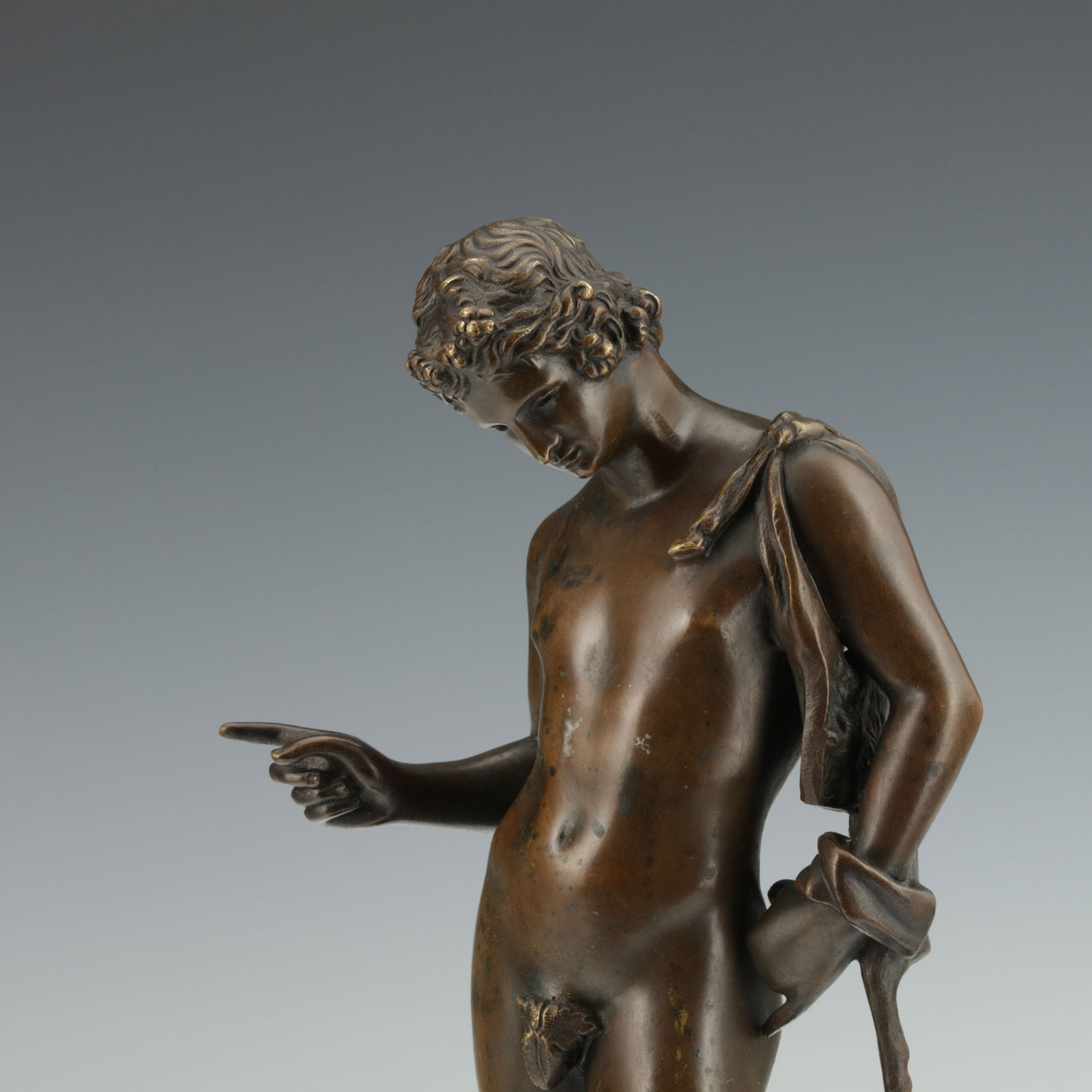
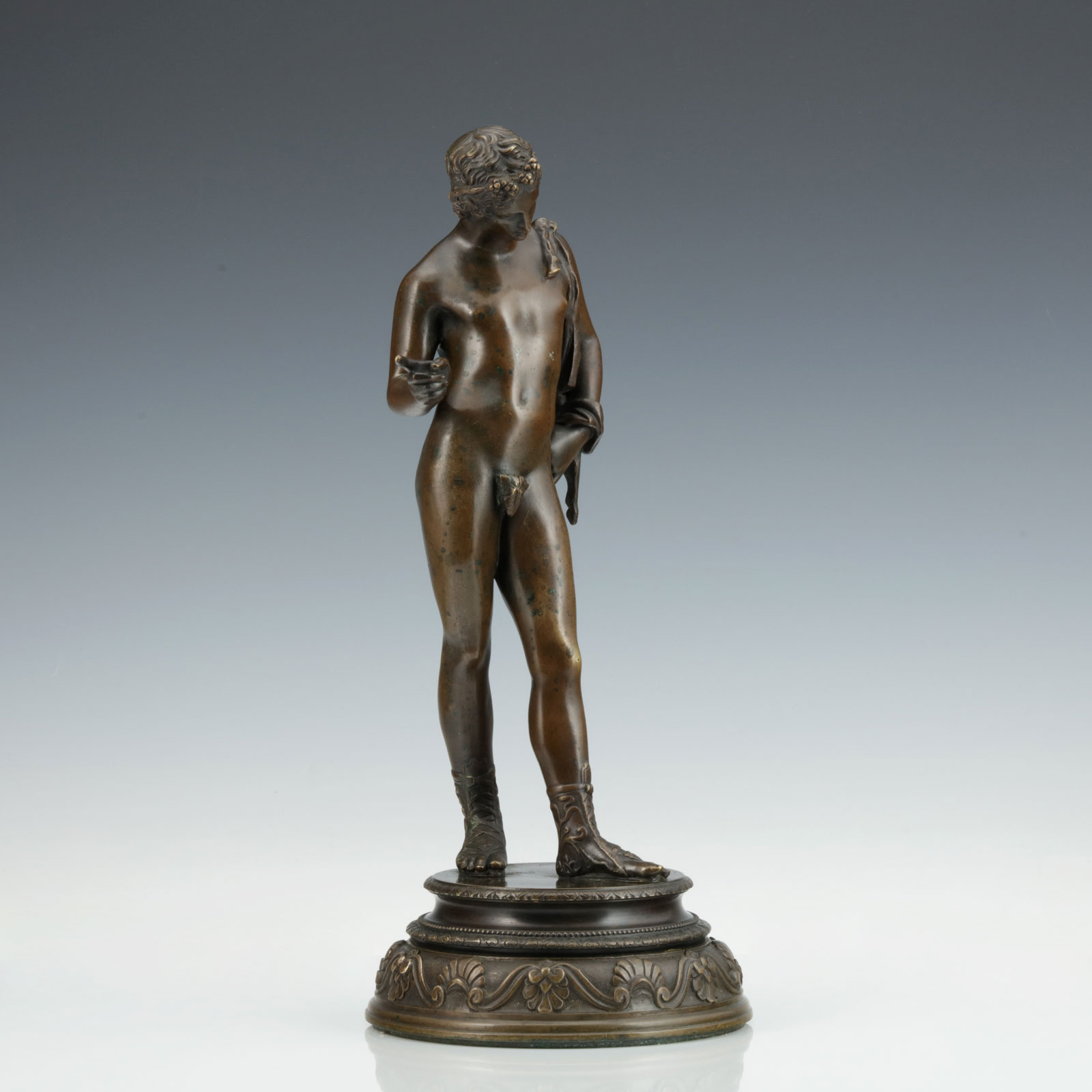
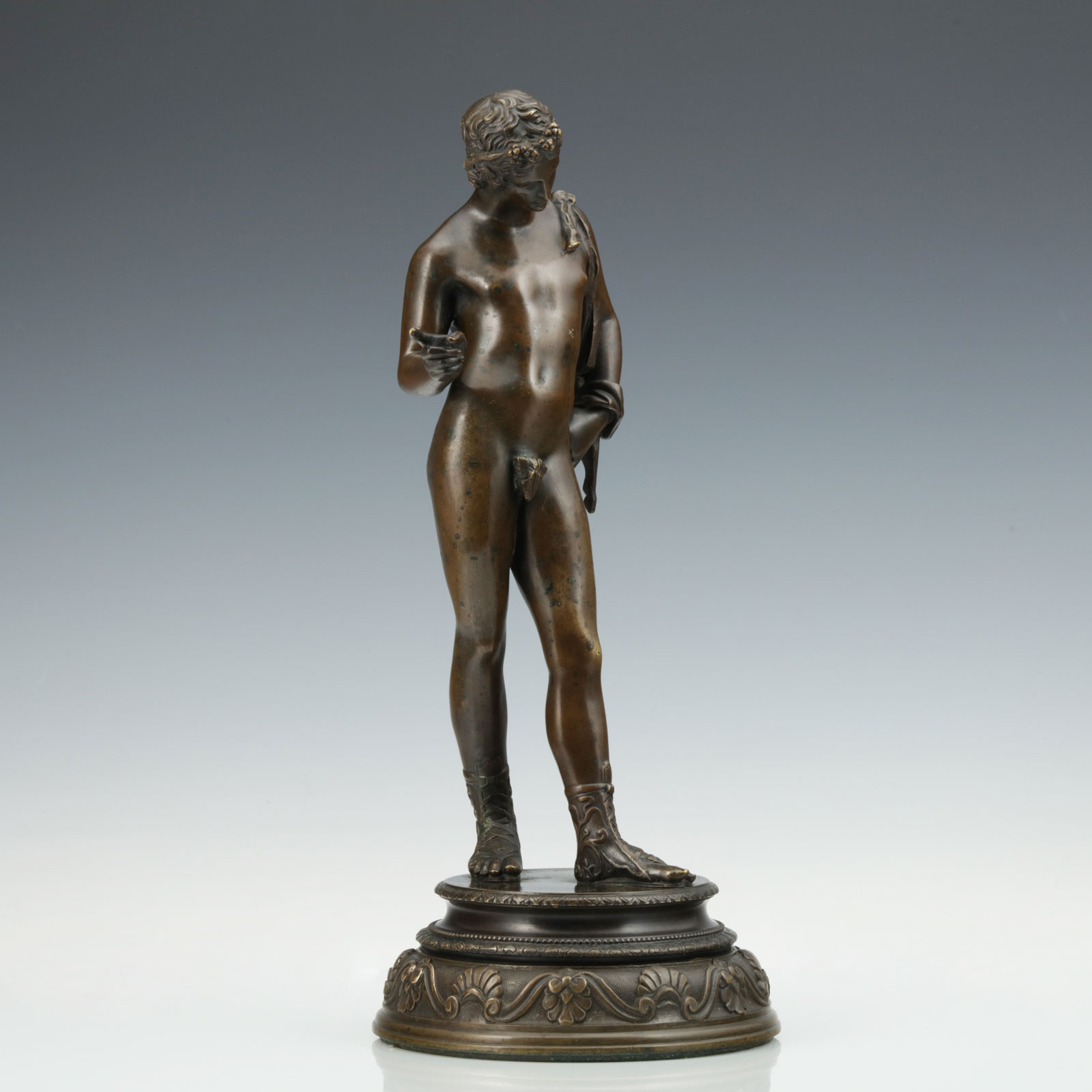
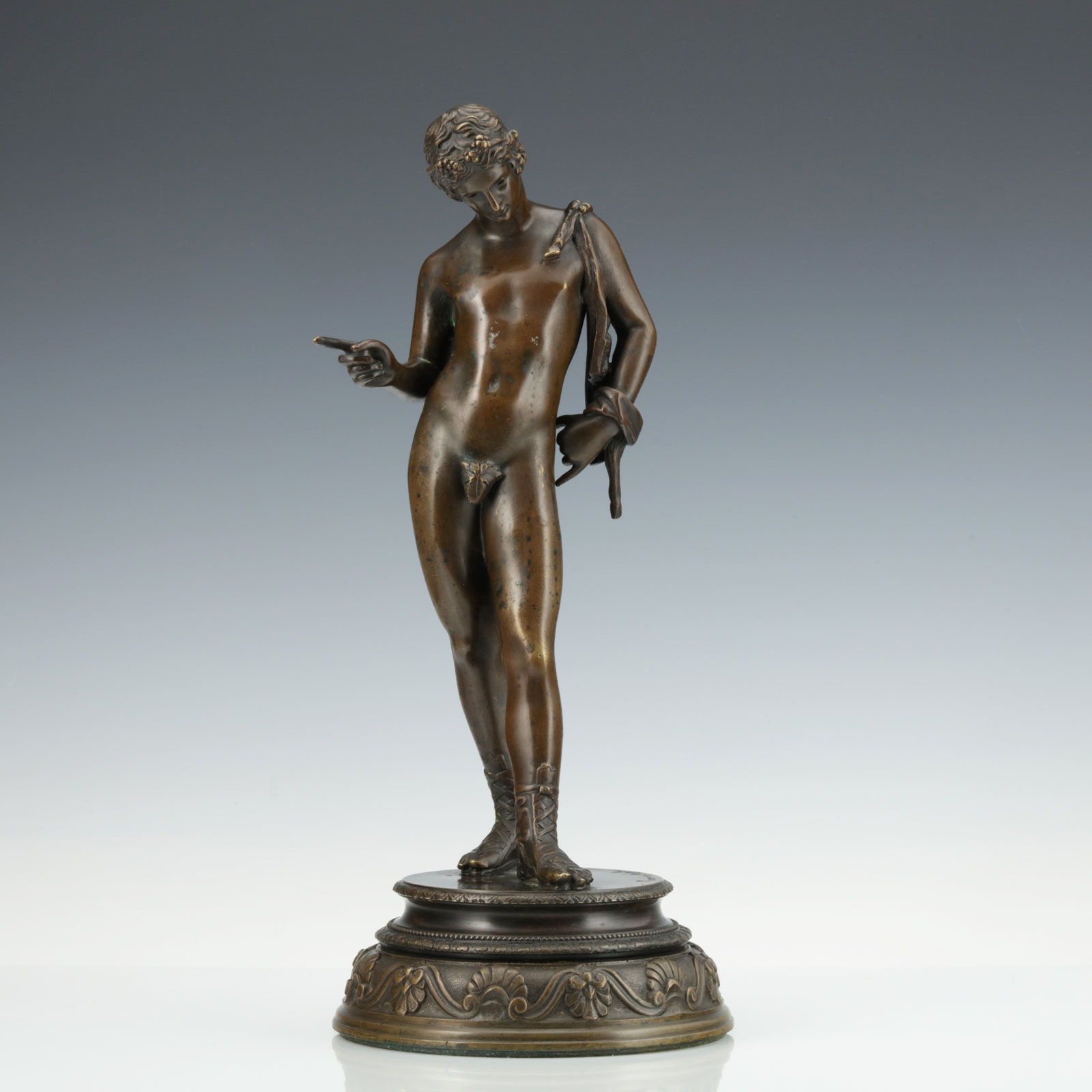
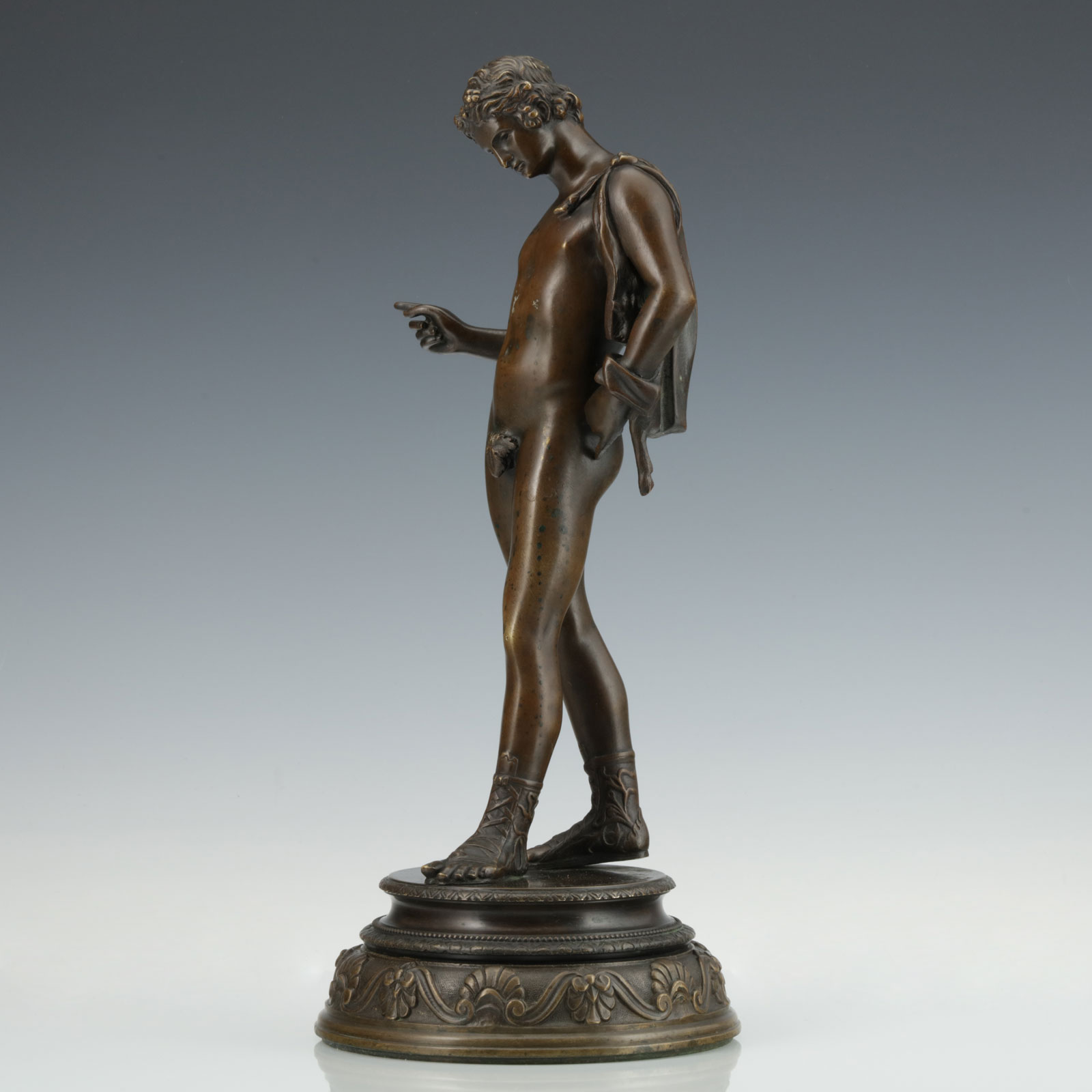
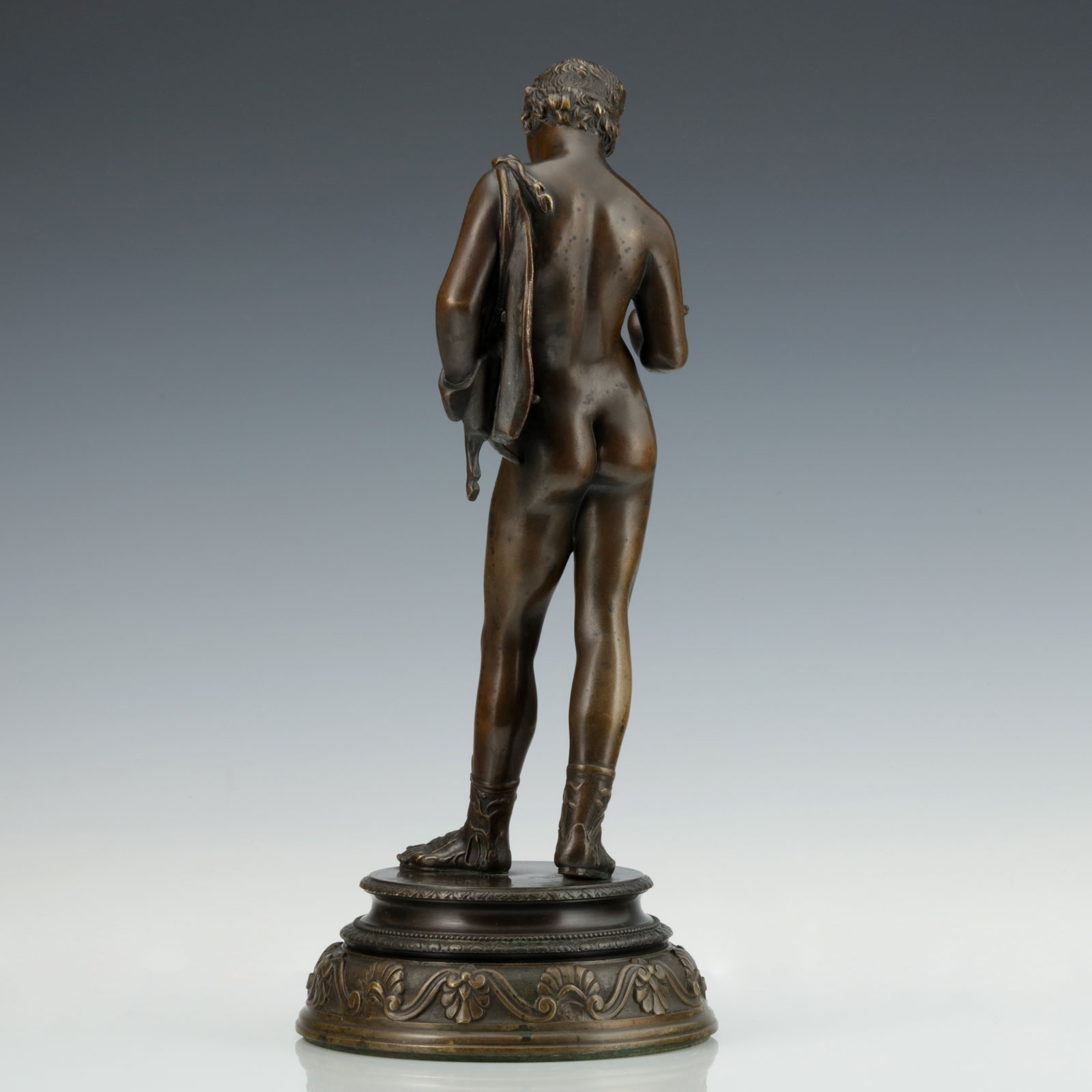
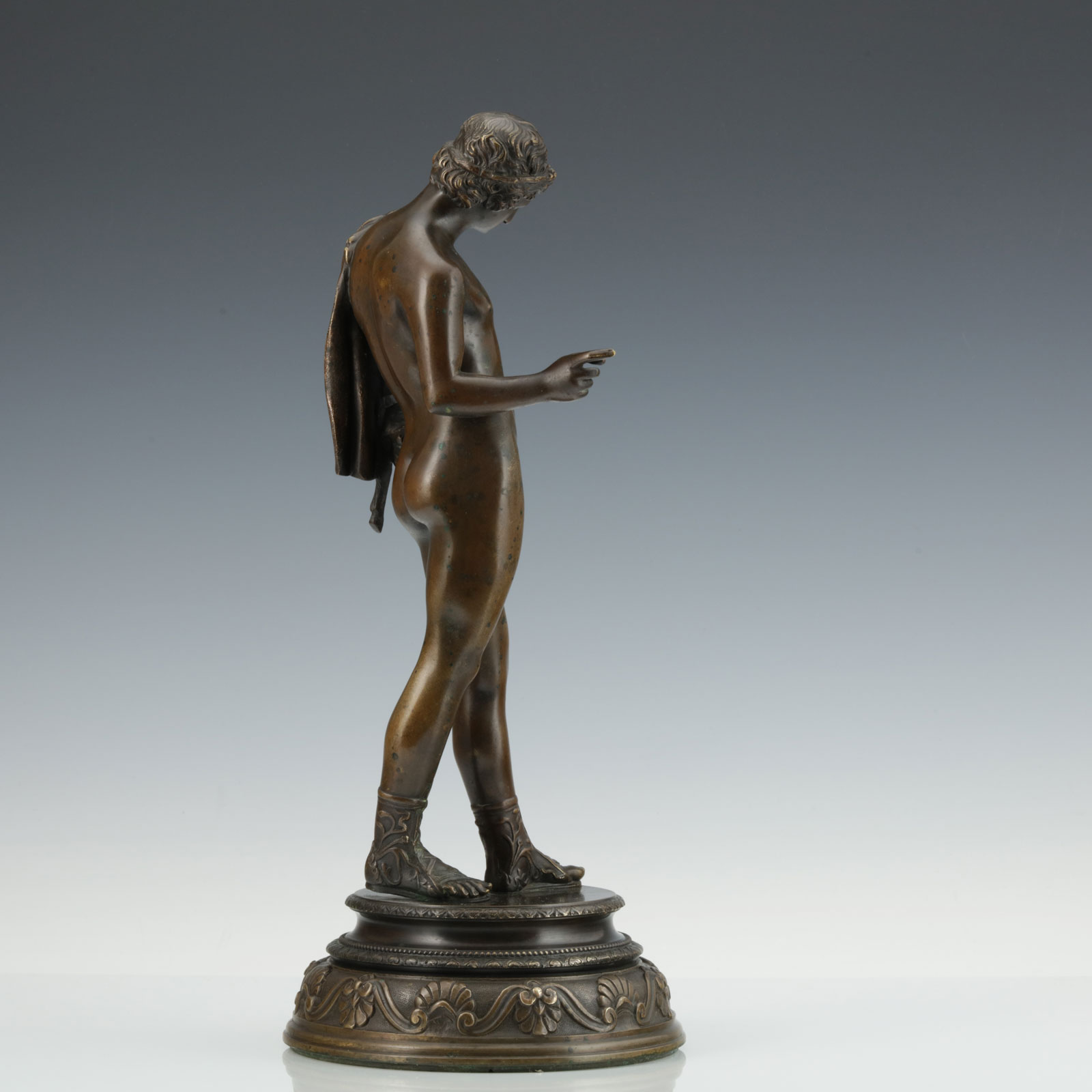
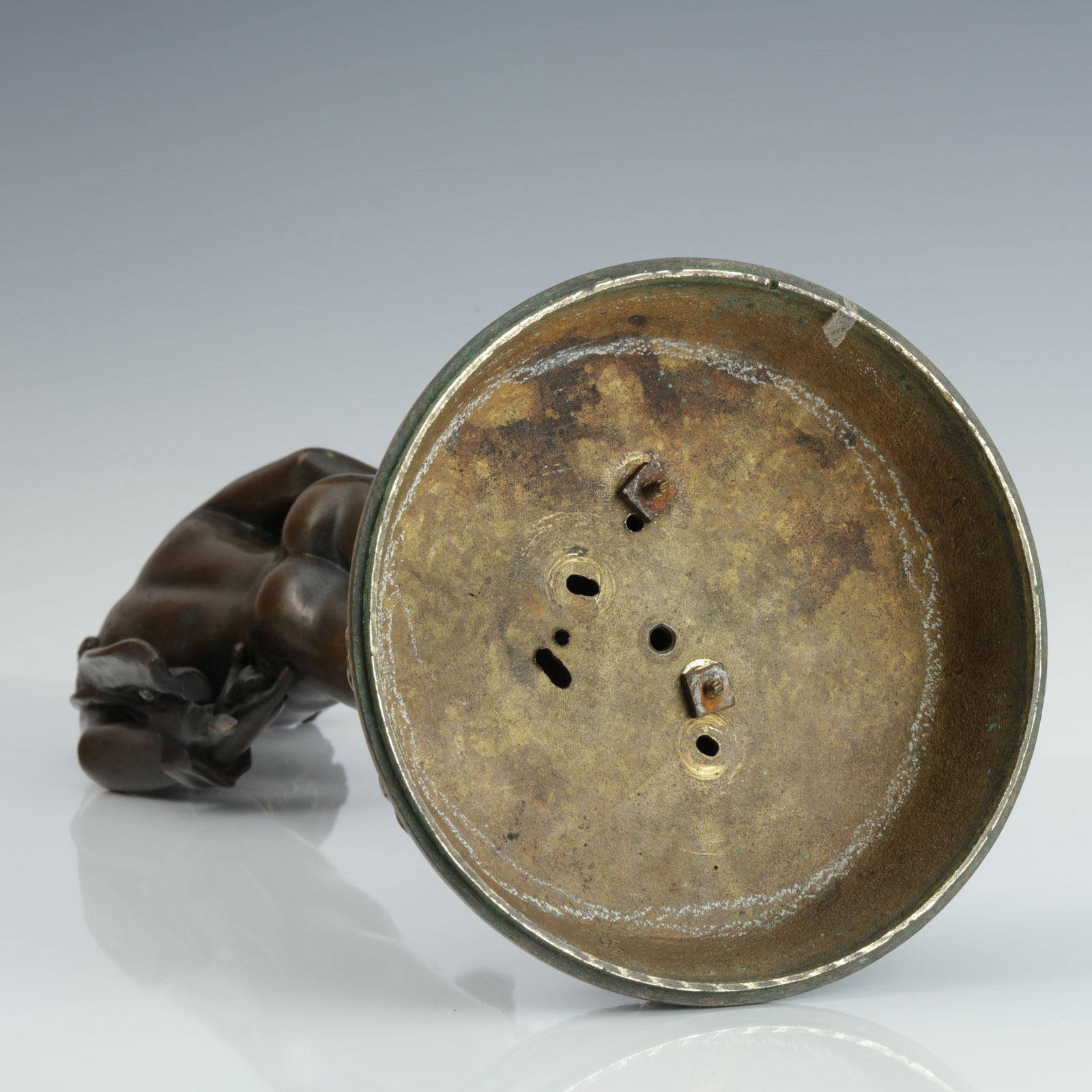
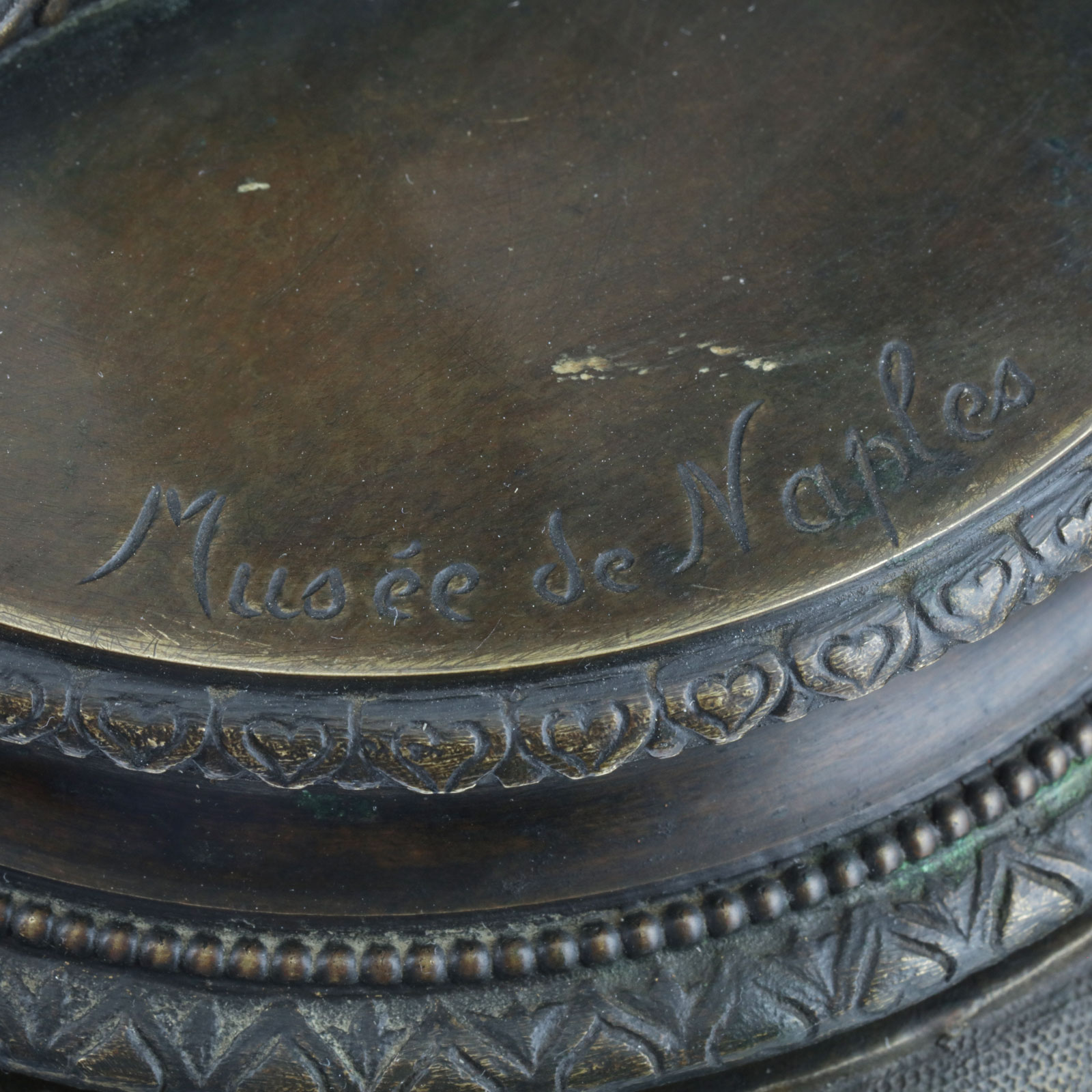
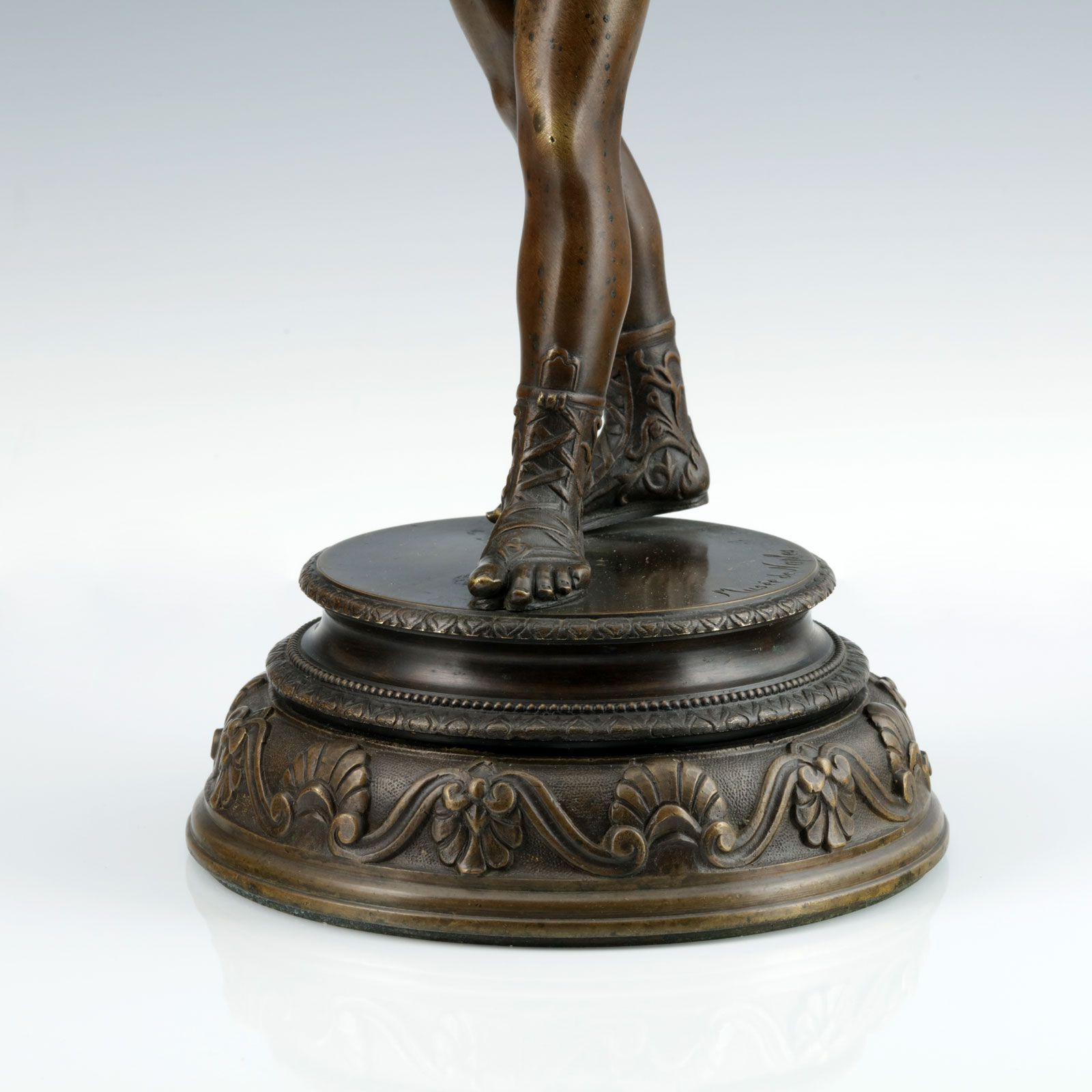
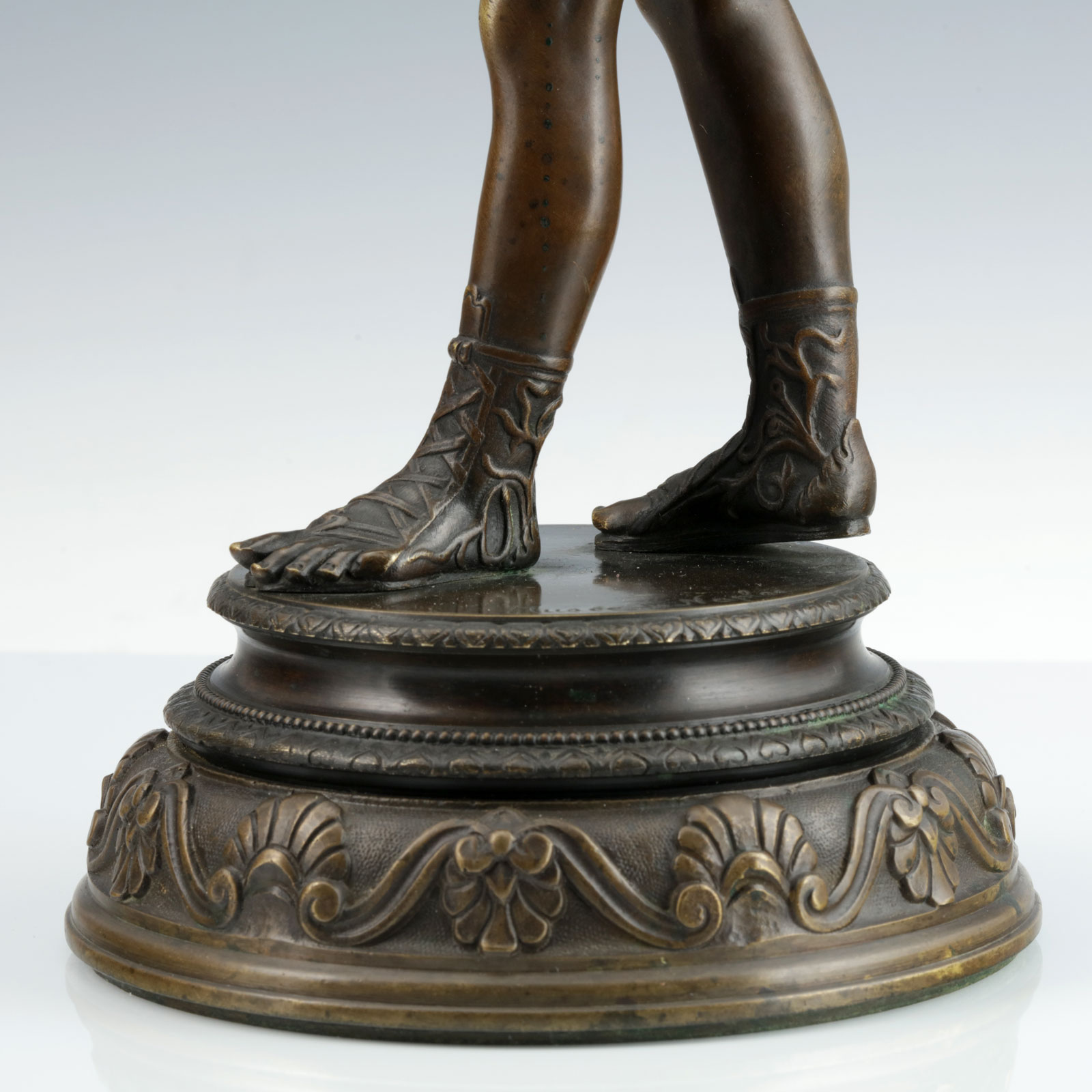
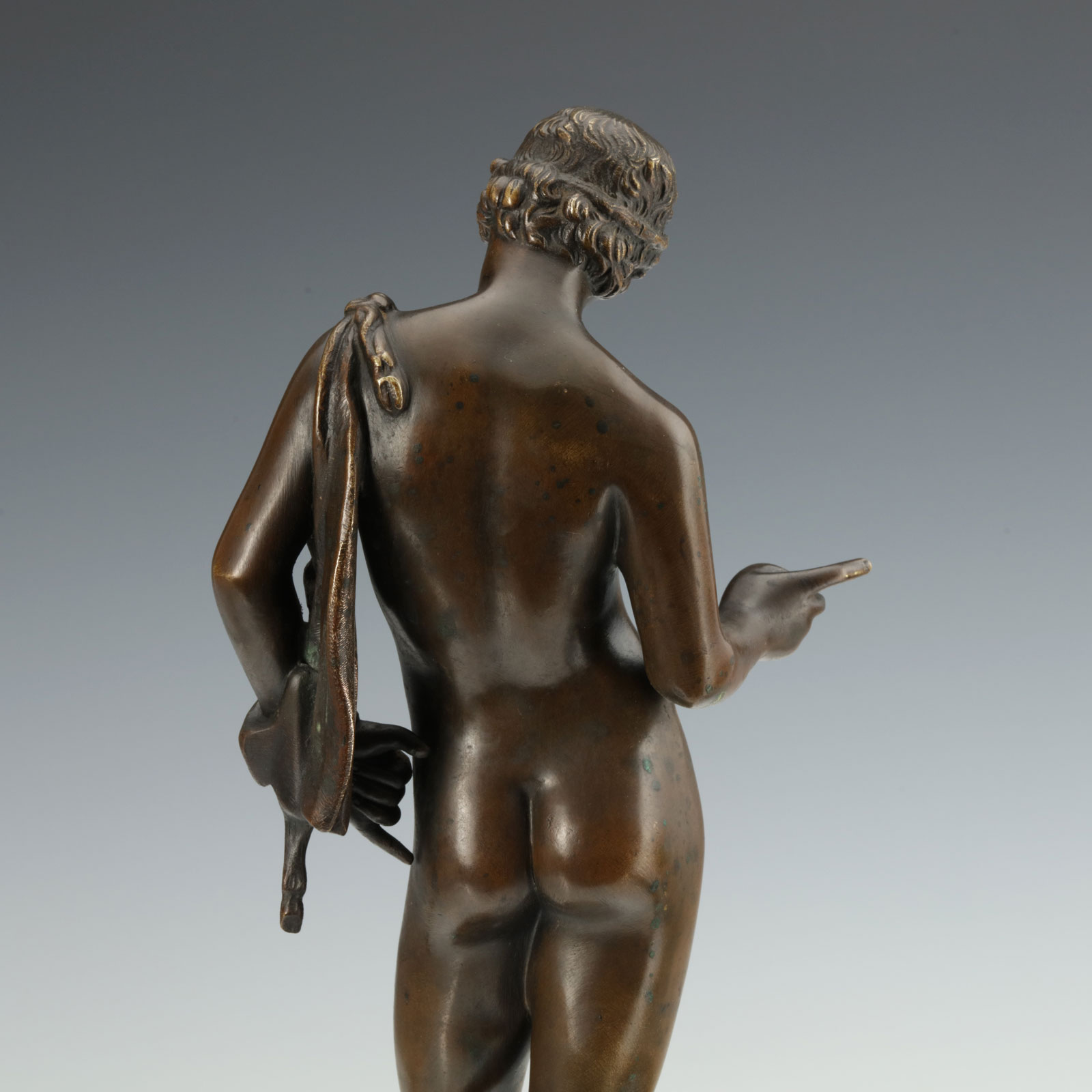
Außergewöhnlich schön gearbeitete Bronzeskulptur aus Italien, Neapel, um 1870. Bronze, patiniert.
Die als „Narziss von Pompeji“ bekannte Figur wurde 1862 bei Ausgrabungen in einer Villa in Pompeji entdeckt und galt bereits kurze Zeit später als absolutes Meisterwerk. Kaum eine antike Skulptur erlangte danach ähnliche Berühmtheit wie der Narziss, bei dem es sich jedoch eher um den jugendlichen Gott Dionysos handelt. Das Original ist eine römische Kopie nach einem späthellenistischen Vorbild. Auf einem runden Sockel steht der mit einem Reif aus Beeren bekrönte Jüngling mit einem Ziegenfell über der linken Schulter und in geschnürten Sandalen – die angeblich schönste Bronze, die in Pompeji ans Licht kam.
Die vorliegende Ausführung besticht durch ihre außerordentlich feine Qualität in der Ausarbeitung der Details und der tiefdunklen Patina. Der runde Sockel ist ungewöhnlich reich dekoriert und geschmückt. Auf dem Sockel die Inschrift „Musée de Naples“.
Höhe gesamt 37cm. Gewicht 3,25kg.
Sehr guter, dem Alter entsprechender Zustand. An einigen exponierten Stellen ist die Patina minimal berieben so das das Metall durchschimmert und schöne Akzente setzt; auf der Oberfläche zeigen sich einige dunkle Stellen – bitte sehen Sie dazu die Fotos.
Lit.: F. Haskell, N. Penny: Taste and the Antique. Yale University Press, New Haven and London, 1981, S. 271/272.
Exceptionally beautiful bronze sculpture from Italy, Naples, c. 1870. bronze, patinated.
The figure known as "Narcissus of Pompeii" was discovered during excavations in a villa in Pompeii in 1862 and was considered an absolute masterpiece just a short time later.
Hardly any other antique sculpture became as famous as the narcissus, which, however,
was more of a youthful god Dionysus. The original is a Roman copy based on a late Hellenistic model. On a round pedestal stands the young man crowned with a hoop of berries with a goatskin over his left shoulder and in laced sandals - supposedly the most beautiful bronze that came to light in Pompeii.
The present design impresses with its extraordinarily fine quality in the elaboration of the details and the deep dark patina. The round base is unusually richly decorated and decorated. The inscription "Musée de Naples" on the base.
Total height 37cm. Weight 3,25kg.
Very good condition according to age. At some exposed places the patina is minimally rubbed so that the metal shimmers through and sets beautiful accents; on the surface there are some dark spots - please see the photos.
Lit.: F. Haskell, N. Penny: Taste and the Antique. Yale University Press, New Haven and London, 1981, p. 271/272.
| Hersteller: | Nationalmuseum Neapel |
| Material: | Bronze |
| Größe: | 37cm |
| Gewicht: | 3,25kg |
| Zustand: | sehr gut |
| Land: | Italien |
I enjoy beautiful things and it is my greatest pleasure to find them, to lure them into their stories, to spend time with them and then set them free again. Add to that a passionate interest in exceptional and high crafted objects. You surely know the exciting feeling when you see or experience something special, when the heart bounces in excitement and the joy inside it spreads. That's what I wanted more in my life and that's how this shop came about. The foundation stone was a study of literature and art history as well as cultural communication. Curiosity, thirst for knowledge and a lot of collaboration with amazing personalities in the art and design world are how I got myself to where I am today. Through antiquities, history becomes tangible in the literal sense, one can perceive it sensually. They calmly defy the constant change of fashions and the taste of the times. They are like a bridge between past and present. For me personally they are an inexhaustible source of inspiration. Some objects give up puzzles, lock themselves up; others quite frankly reveal their past. They radiate joie de vivre, astonish or enchant us; make a collector's heart beat faster or become good friends and a meaningful place in your lives. They may be bulky or controversial, but they are never boring. I believe the stories, the hands, and the tradition behind the objects are equally as important as their aesthetic qualities. Antique objects can adds so much value to your life, and I personally cannot imagine a home without it. Each piece in my shop has been thoughtfully and personally chosen. What unites them is their craftsmanship, care and attention to detail. Enjoy them.

